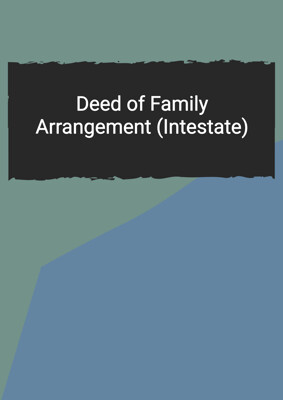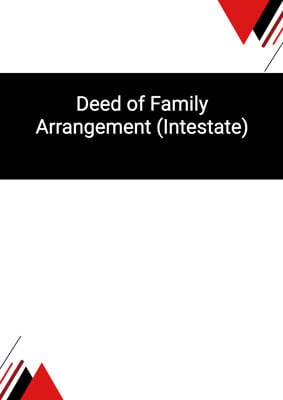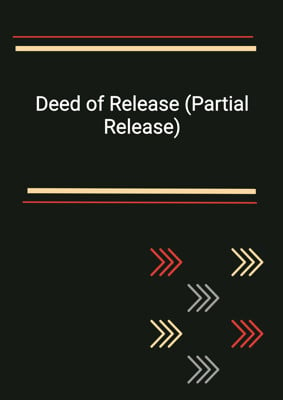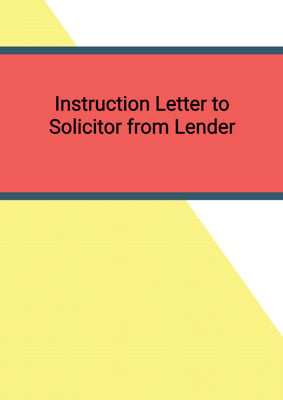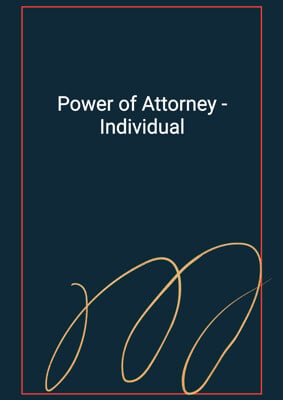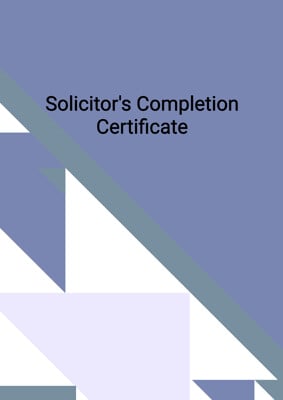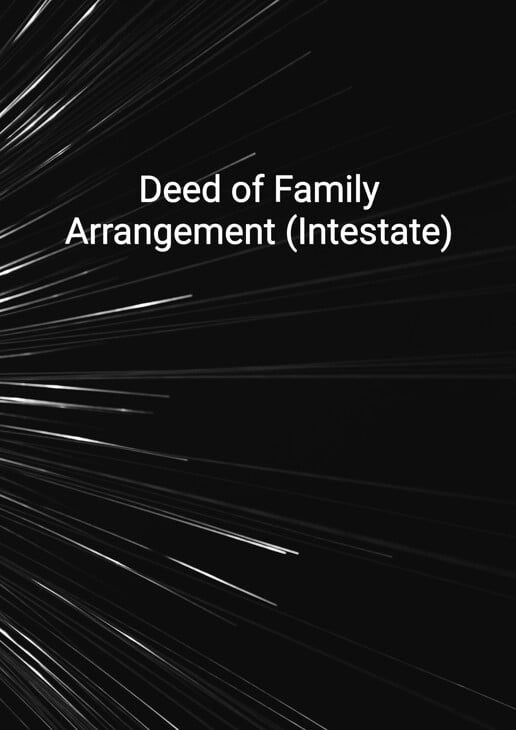
Deed of Family Arrangement (Intestate)
Children and Widower (Husband)
The Deed of Family Arrangement alters the way the deceased person's assets will distributed between the beneficiaries. In this template, the widower waives her right, title and interest in the property and two children get ownership of the properties of the deceased.
How to Tailor the Document for Your Need?
01
Create Document
Fill in the details of the parties. You can click the "Fill with Member’s Information" button to complete it with information saved to your account.
02
Fill Information
Please fill in any additional information by following the step-by-step guide on the left hand side of the preview document and click the "Next" button.
03
Get Document
When you are done, click the "Get Document" button and you can download the document in Word or PDF format.
04
Review Document
The document should be signed by the authorised signatory (or directors of a company) and witnessed to complete the formality.
Document Preview
Document Description
The Deed of Family Arrangement (Intestate) is a legal document that is entered into by the parties involved to distribute the estate of a deceased person who died intestate. The document begins by providing a detailed introduction, highlighting the importance of the document in ensuring a fair and equitable distribution of the deceased's estate.
The document consists of several sections, each serving a specific purpose. The first section identifies the parties involved in the agreement, including the first beneficiary, second beneficiary, and third beneficiary. It also includes their addresses and their relationship to the deceased.
The second section provides background information about the deceased, stating that they died intestate and survived by their lawful and natural children, the first beneficiary and the second beneficiary, as well as their lawful widower, the third beneficiary. It also mentions that the deceased owned various properties, referred to as the 'said properties,' which are described in detail in the schedules attached to the document.
The third section states that the letter of administration for the deceased's estate was granted to the estate administration in party 3 jurisdiction state. It further explains that the estate administration has already paid the funeral and testamentary expenses, debts, and death duties using the property of the deceased, excluding the 'said properties.'
The fourth section emphasizes the agreement between the parties involved. The third beneficiary agrees to waive and renounce all their rights and interest in the 'said properties' out of natural love and affection for the first beneficiary and second beneficiary. This agreement is referred to as a 'family arrangement' and forms the basis of the distribution of the estate.
The fifth section contains the specific details of the family arrangement. It states that the first beneficiary will have absolute enjoyment and ownership of the property described in schedule 1, while the second beneficiary will have absolute enjoyment and ownership of the property described in schedule 2. The third beneficiary irrevocably and absolutely waives and renounces all their rights, titles, claims, and interest in the 'said properties.'
The sixth section addresses the execution of necessary documents to carry out the family arrangement. It states that the estate administration, as the administrator of the estate, will execute all necessary assents, assignments, conveyances, or deeds to give effect to the arrangement.
The seventh and eighth sections contain covenants made by the second beneficiary and first beneficiary, respectively. The second beneficiary covenants to pay and discharge all claims, charges, outgoings, expenses, and costs related to the property described in schedule 2, indemnifying the administrator and the estate against such claims. Similarly, the first beneficiary covenants to pay and discharge all claims, charges, outgoings, expenses, and costs related to the property described in schedule 1, indemnifying the estate against such claims.
In conclusion, the Deed of Family Arrangement (Intestate) is a crucial document that ensures a fair distribution of the estate of a deceased person who died intestate. It provides a detailed introduction and covers various sections, including the identification of parties, background information, the family arrangement, execution of necessary documents, and covenants made by the beneficiaries. The document aims to establish clarity and avoid any disputes or misunderstandings regarding the distribution of the estate.
How to use this document?
To use the Deed of Family Arrangement (Intestate) effectively, follow these steps:
1. Identify the parties involved: Enter the names and addresses of the first beneficiary, second beneficiary, and third beneficiary. This ensures that all parties are clearly identified and can be held accountable.
2. Understand the background: Familiarize yourself with the background information provided in the document. This includes the fact that the deceased died intestate and the properties owned by the deceased, referred to as the 'said properties.'
3. Comprehend the family arrangement: Pay close attention to the details of the family arrangement. Note that the first beneficiary will have absolute enjoyment and ownership of the property described in schedule 1, while the second beneficiary will have absolute enjoyment and ownership of the property described in schedule 2. The third beneficiary waives and renounces all their rights and interest in the 'said properties.'
4. Execute necessary documents: Ensure that the estate administration, as the administrator of the estate, executes all necessary assents, assignments, conveyances, or deeds to give effect to the family arrangement. This step is crucial in implementing the distribution of the estate.
5. Fulfill covenants: Both the second beneficiary and first beneficiary have made covenants. The second beneficiary must pay and discharge all claims, charges, outgoings, expenses, and costs related to the property described in schedule 2, indemnifying the administrator and the estate. Similarly, the first beneficiary must fulfill the same obligations for the property described in schedule 1, indemnifying the estate.
By following these steps, you can effectively utilize the Deed of Family Arrangement (Intestate) to ensure a fair and smooth distribution of the deceased's estate, avoiding any potential disputes or complications.
Not the right document?
Don’t worry, we have thousands of documents for you to choose from:




